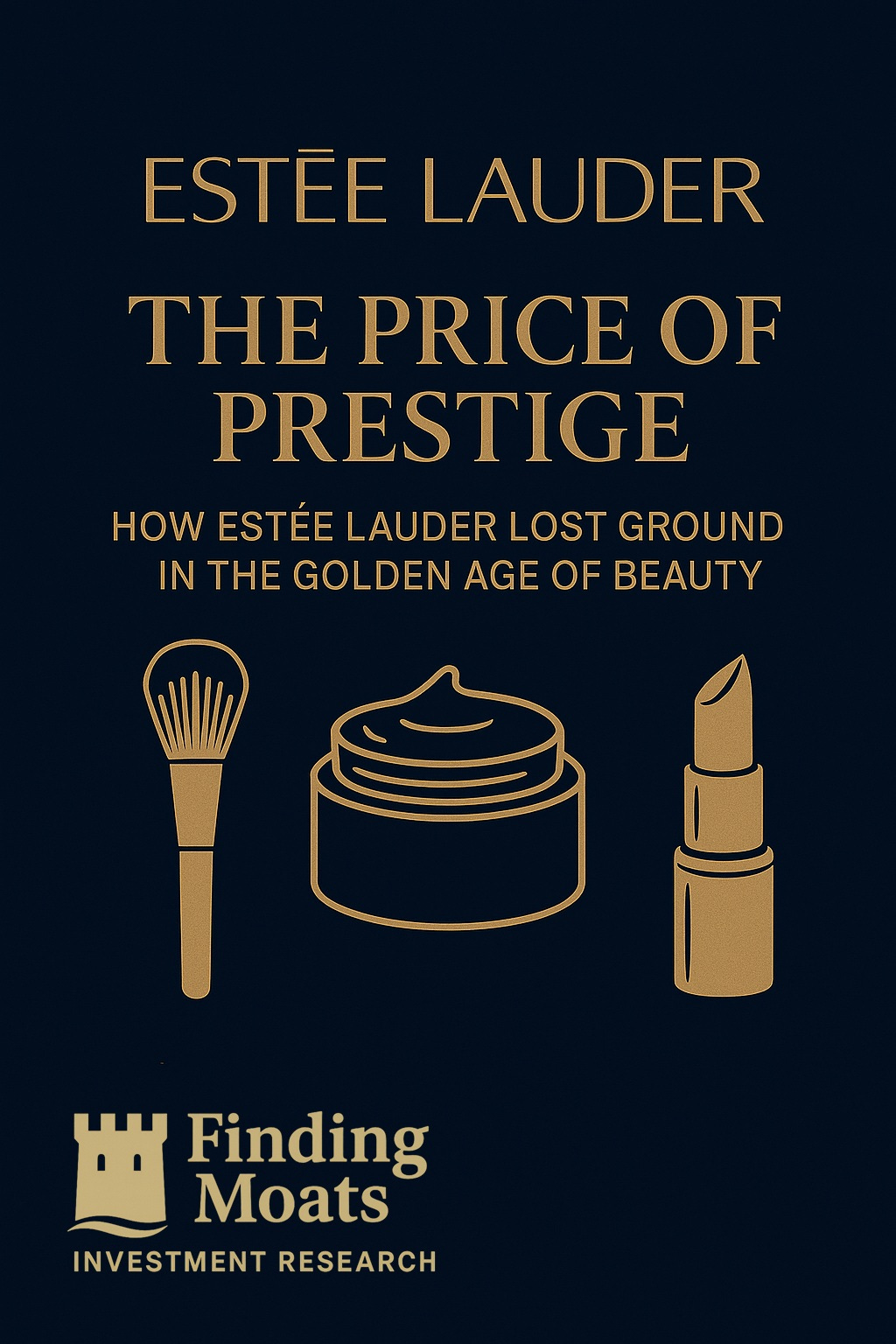The Estée Lauder Companies (EL)
The Price of Prestige. How Estée Lauder Lost Ground in the Golden Age of Beauty
Human beings have been drawn to skincare for millennia. Long before modern dermatology or billion-dollar marketing budgets, ancient civilizations experimented with oils, pigments, and ointments to protect their skin and enhance their appearance. That same desire persists today — but the beauty industry has evolved into a complex, high-margin global business shaped by technology, consumer psychology, and shifting demographics. Among the giants of this industry, Estée Lauder stands as a symbol of prestige, consistency, and reinvention. And yet, after years of extraordinary performance, the company now finds itself navigating a period of unusual turbulence.
Despite its resilience and brand loyalty, the cosmetics sector is becoming one of the most fiercely competitive consumer categories. Barriers to entry are lower than ever, thanks to social media, outsourced production, and DTC business models. Smaller brands with niche positioning and influencer backing can quickly erode incumbents’ market share. For legacy players like Estée Lauder, defending historical strengths while staying relevant to new generations of consumers requires not only agility, but strategic clarity — something investors are beginning to question.
Under CEO Fabrizio Freda, Estée Lauder spent a decade diversifying beyond its North American roots, aggressively expanding in Asia and becoming a leader in travel retail. Digital advertising replaced traditional marketing, allowing for better targeting and higher returns on spend. For a time, this pivot worked brilliantly: operating margins rose, global scale increased, and the stock price delivered outstanding returns. But as post-pandemic realities set in, some of these bold bets have begun to show cracks — particularly in Asian markets, where recovery has been slower than expected, and inventory challenges have persisted.
Meanwhile, consumer behavior has changed. Today’s customers are more informed, less brand-loyal, and expect faster results. The rise of video bloggers and online reviews has disintermediated the once-powerful in-store beauty advisor. Many of Estée Lauder’s most iconic brands now face the challenge of maintaining their prestige while adapting to younger, more digitally native audiences. And with 20% of products sold each year being new, the ability to launch successful innovations consistently is critical.
Recent acquisitions — some of them costly and poorly timed — have added pressure rather than relief. At a time when L’Oréal is gaining share and outperforming the market, Estée Lauder is struggling to defend its position. This has raised fundamental questions: Are the company’s problems merely temporary, tied to Asia’s recovery? Or do they reflect deeper issues of strategy, execution, and innovation?
In this report, we take a deep dive into the dynamics shaping the global beauty industry and Estée Lauder’s role within it. We explore the evolution of its brand portfolio, assess the competitive pressures it faces, and consider what the future might hold for one of the most storied companies in modern cosmetics. The answers may not be obvious — but they are worth examining carefully.




